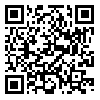جستجو در:
دوره 16، شماره 5 - ( 1404 )
جلد 16 شماره 5 صفحات 195-161 |
برگشت به فهرست نسخه ها
Download citation:
BibTeX | RIS | EndNote | Medlars | ProCite | Reference Manager | RefWorks
Send citation to:



BibTeX | RIS | EndNote | Medlars | ProCite | Reference Manager | RefWorks
Send citation to:
Amirshojai A, Mollanazar H. Identity Construction from a Narrative Perspective (Frame Analysis in Translation of Paratextual Features: Orientalism Concepts & Edward Said in 80s of Iran). LRR 2025; 16 (5) :161-195
URL: http://lrr.modares.ac.ir/article-14-63844-fa.html
URL: http://lrr.modares.ac.ir/article-14-63844-fa.html
Amirshojai Anahita، Mollanazar Hussein. Identity Construction from a Narrative Perspective (Frame Analysis in Translation of Paratextual Features: Orientalism Concepts & Edward Said in 80s of Iran). جستارهای زبانی. 1404; 16 (5) :161-195
1- PhD Candidate in Translation Studies, Allameh Tabataba’i University ، amirshojaianahita@gmail.com
2- Associate Professor, Department of Translation Studies, Allameh Tabataba'i University
2- Associate Professor, Department of Translation Studies, Allameh Tabataba'i University
چکیده: (2330 مشاهده)
The world is not a neutral or value-free reality, but each person inevitably experiences it in terms of value. So, every person in the society has a perception of reality and the translator is no exception. However, this has a lot to do with his/her social status. Understanding a symbolic system such as language as a product of culture is done through our expression of reality. Identity construction is somehow related to reality construction. So the main issue is not how the narrative is constructed as a text, but how it acts as a mental tool in constructing reality and consequently, identity. Like the controversial issue of language and thought, it is not easy to deal with narrative discourse and narrative thinking, since the reality existed in the mind, depends on the spatio-temporal framework of the culture in question. In this regard, elaborating on the concept of narrative identity, and the applicability of Goffman’s Frame Analysis in mentioned concept, this paper shows how society, as a cultural frame, forces the translator or the publisher to retell the narrative and to reconstruct the identity, and why this identity formation will be more pronounced in the paratextual elements (translatorial &authorial prefaces). Analyzing the frame of 80s, along with literature and media, it proposes a hybrid model based on Somers’ features (Paul Ricoeur’s Mimesis), and Goffman’s Framework for the concrete manifestation of renarration, and the incorporation of the core conception of identity formation, to indicate how orientalism concepts have been renarrated in translatorial and authorial prefaces of Edward Said’s Orientalism, affected by structure or agency during 80s in Iran, and how these prefaces play a crucial role in framing readers’ interpretation. Finally, it has concluded that, regarding structure/agency, and the involvement of multiple agents in translation, different author-functions and identities have developed through the presentation of the prefaces in question.
ارسال پیام به نویسنده مسئول
| بازنشر اطلاعات | |
 |
این مقاله تحت شرایط Creative Commons Attribution-NonCommercial 4.0 International License قابل بازنشر است. |









